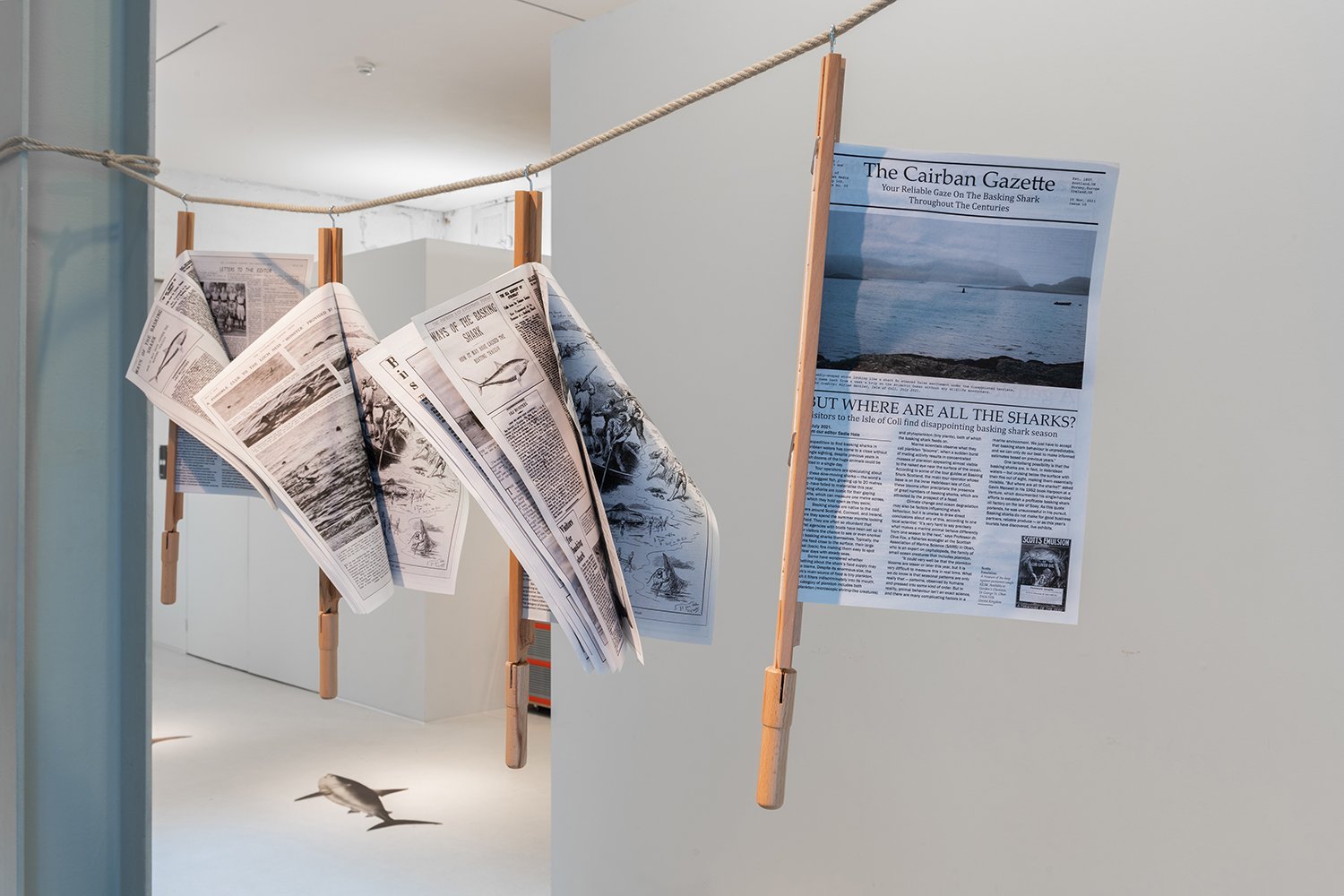Brigði: collaboration day with Miriam Sentler
Cairban: A Contemporary Shark Hunt at Looiersgracht 60 Amsterdam, 2022.
Shetland based artists are invited to a collaboration day in the Toogs Artist Workshop under the collective banner of Brigði: A bridge of Plankton Blooms & Basking Sharks.
The day will be led by artist Miriam Sentler (DE/NL) with support from Ann-Kristin Stølan (Pamflett, NO) and Gaada.
Brigði is a word present in Shaetlan dialect (“Basking Shark”), Old Norse ("right to reclaim" or "change"), and also Norwegian Nynorsk (“Bridge”). This day is an opportunity for Shetland based artists to work alongside some of our Norwegian peers, towards a collective publication that spans the North Sea and set a basis for future exchanges.
Spaces are very limited and 100% subsidised so
please sign up only if you are able to attend!
Below, Miriam explains some of the themes and ideas we will be exploring throughout the day:
Looking for a point of connection between Shetland and Bergen, this work focuses on an oddly-looking animal calling the waters off both of these places its home: The basking shark. This second-largest fish swims with his mouth wide open, filtering the water for plankton: the animated matter which forms the origins of the oil industry. Next to Shetlands’ highly industrialized use of plankton in the oil industry, it also constitutes the diet of whales and basking sharks, which have been hunted in large numbers by both Scots and Norwegians.
Until 1994, the basking shark was hunted for its liver oil within these waters, an oil which was used to light lamps, for the healing of wounds, as a fertility-enhancer and as a cure against respiratory illnesses. The skin of the shark was used as sanding paper in woodworking and construction by small island communities across the Shetlands and the western coast of Norway. Famous British shark hunters include the naturalist Gavin Maxwell (1914 - 1969) who started an oil production plant on the remote Hebridean isles and also wrote a book about the shark. Scottish Natural Heritage (SNH), which is involved in a tagging project aimed a protecting the oil-producing sharks, said hunting reached a peak in 1947 when 250 sharks were landed. Across the whole of the North East Atlantic, there was a record 4,500 basking sharks caught in the early 1960s. Nowadays, the basking shark is protected and attracts tourists from all parts of the world. Last year, the Shetlands have reported a whopping 108 sightings, most likely linked to an unusually large plankton bloom taking place in the summer months of 2022.
The proposed workshop at Gaada centers around the alternative uses of plankton and oil by more-than-human inhabitants of the Atlantic, as well as the creative usages of oil by small island communities before the start of the commercialized oil adventure in the 1960s. During the workshop on the island, we would like to seek out the natural origins of the fossil fuel industry, using sea-based materials, natural history images of the basking shark, snap shots from its aquatic environment and different printmaking techniques to think collectively about oil’s place in the ecological lifeworld of the shark, next to exploring creative usages of animal-based materials in printmaking.
By highlighting this peculiar animal and the largely unknown usages of its oil in the early years of the oil industry, the workshop is informed by my past work Cairban: A Contemporary Shark Hunt , a project in which the basking shark’s changing appearance in printed matter has been followed through newspaper article archives from the 1800s until the early 2000s. The wider intention of this project is to retrace our need and use for oil through the small-scale island communities where it originates from— and the way in which this growing need contests our ancestral respect and mythicizing with the animals which first produced them.








